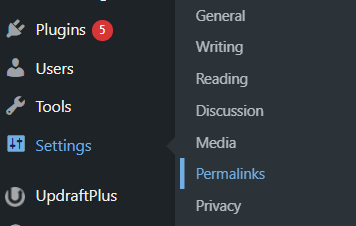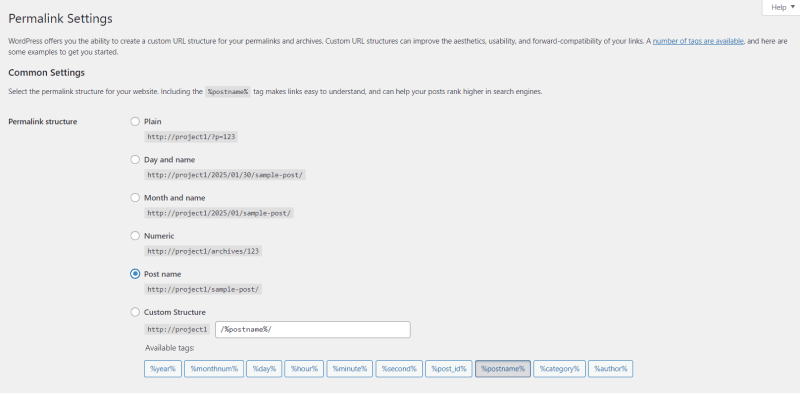
Optimizing your WordPress site's permalinks is crucial for enhancing both user experience and search engine optimization (SEO). Permalinks are the permanent URLs that link to your individual posts, pages, and other content on your website. An SEO-friendly permalink structure can improve your site's visibility and make it easier for visitors to understand and share your content.
WordPress offers several permalink structures:
For optimal SEO performance, it's recommended to use the "Post Name" structure:
Post Name: http://example.com/sample-post/
This structure is concise and includes keywords relevant to your content, making it both user-friendly and SEO-friendly. Search engines favor URLs that clearly indicate the content's topic.
Access the Permalink Settings:
Log in to your WordPress dashboard.
Navigate to Settings > Permalinks.

Select the Desired Structure:
Choose the "Post Name" option.

Alternatively, for larger sites with complex content, consider a custom structure that includes categories:
Custom Structure: /%category%/%postname%/
This structure organizes content hierarchically, which can benefit both users and search engines.
Click "Save Changes" to apply the new permalink structure.
Include Target Keywords: Incorporate primary keywords in your URLs to signal content relevance to search engines.
Keep URLs Short and Descriptive: Shorter URLs are more readable and shareable. Avoid unnecessary words or characters.
Use Hyphens to Separate Words: Hyphens improve readability; avoid using underscores or spaces.
Avoid Dynamic Parameters: Steer clear of using query strings or excessive parameters in URLs, as they can be less user-friendly and harder for search engines to index.
Implement Redirects When Changing Permalinks: If you modify an existing permalink structure, set up 301 redirects to prevent broken links and preserve SEO value.
Avoid Frequent Changes: Changing permalinks can lead to broken links and negatively impact SEO. Decide on a structure early and stick with it.
Use HTTPS: Ensure your site uses HTTPS to enhance security and SEO rankings.
By carefully configuring your WordPress permalinks and following these best practices, you can create SEO-friendly URLs that enhance both search engine visibility and user experience.
Other Worpress Articles that may be interesting for you: